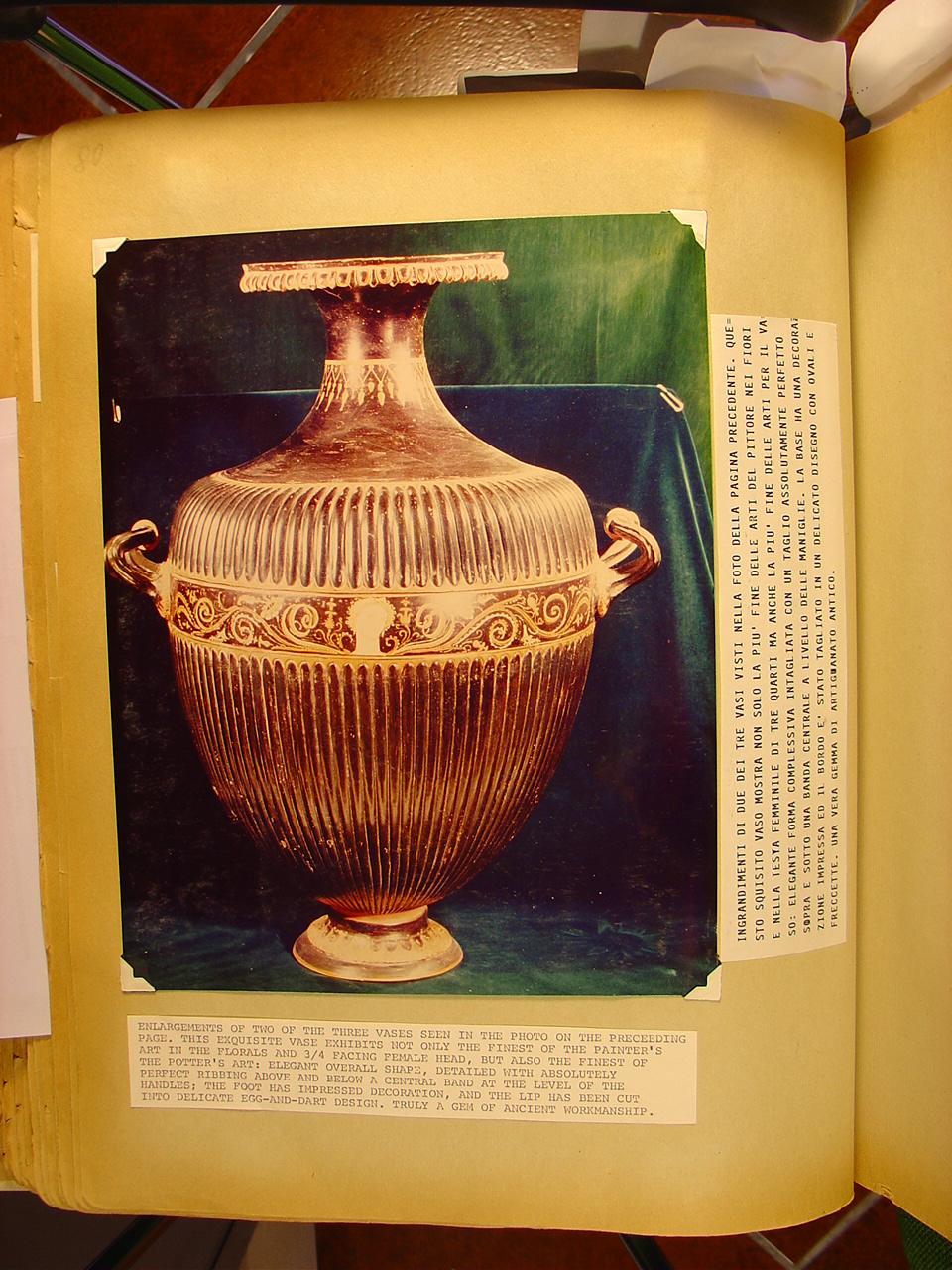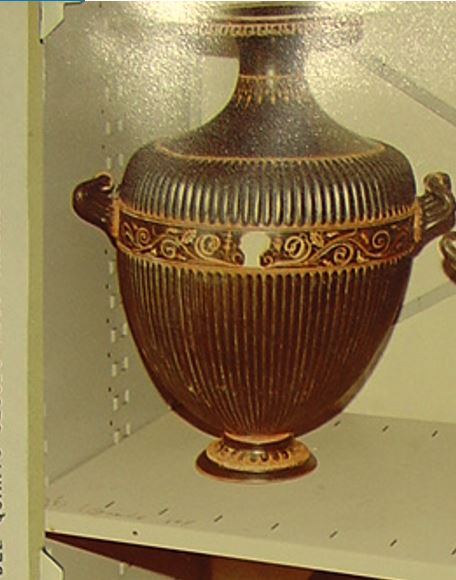Object Description
Apulian Gnathia Hydria
Apulian Gnathia hydria attributed to the workshop of the Baltimore Painter. Black-glazed, with vertical ribbing on the body, a smooth, unribbed, horizontal band along the handle zone, centered by a female head emerging from elaborate scrolling tendrils, a band of ivy on the reverse.
Identification Date
01 Oct 2019
Identification Location
Royal-Athena Galleries, New York
Artefact History
Before 1980
Two images, depicting the same hydria, suggest that the antiquities dealer David Holland Swingler was in possession of this artefact, mentioning in the captions that ‘a major East coast collector’ purchased it together with other vases. The images were discovered by Tsirogiannis in the archive confiscated from the antiquities dealer David Holland Swingler.
1980
The hydria appears for sale in with Royal-Athena Galleries, New York. In 1980 the hydria was purchased by the antiquities collector John Kluge from Royal-Athena Galleries.
08 Jun 2004
The hydria appears for sale in the Christie’s June 8, 2004 antiquities auction of the John Kluge (‘The Morven’) collection, in New York, as lot 345.
April 2005
The hydria re-appears in a Royal-Athena Galleries and is sold to ‘Dr. E. collection, North Carolina’, in April 2005.
2019
The hydria appeared in the website of the Royal-Athena Galleries, with a provenance ‘Ex collection of John Kluge, Charlottesville, VA, acquired from Royal-Athena in 1980; Dr. E. collection, North Carolina, acquired from Royal-Athena in April 2005’. Tsirogiannis identifies the hydria and in 2021 publishes an article referring also to this case (Tsirogiannis 2021).
Artefact Status
2020
Unknown. Royal-Athena Galleries was permanently closed in October 2020 announcing that the remaining artefacts were transferred to ‘Hixenbaugh Ancient Art’.

